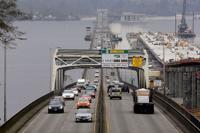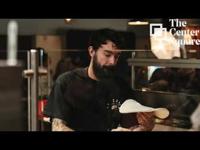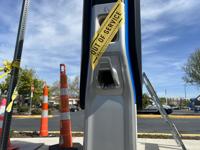(The Center Square) – Washington Democrats want to get the state moving, but two transportation plans still on the table would put more commuters behind the wheel than on a bus.
The two plans stem from four spending packages introduced this session in the state legislature aimed at crossing a host of overdue infrastructure projects off the state's to-do list.
The first, "Forward Washington," comes from state Sen. Steve Hobbs, D-Lake Stevens and would hike the state's gas tax from 49.5 cents to 59.3 cents by July 1. The 9.8 cent increase would raise some $5.2 billion over the next 16 years, a substantial increase from the 6-cent proposal Hobbs submitted in January.
Hobbs has sold his $18 billion plan, up from $15 billion in January, as a "no frills" budget intended to keep the state operable and not much else.
“This budget only keeps the lights on, and Washingtonians expect and need more than a transportation budget that merely keeps the lights on,” Hobbs said. "One-time federal money will keep us afloat for a bit, but to really address the multitude of needs that exist in communities throughout Washington, a transportation revenue package must be passed.”
Hobbs' plan is paid for in part by a controversial cap and trade program from state Sen. Reuven Carlyle, D-Seattle, which would raise $5.1 billion over the same 16-year timeframe and a low-carbon fuel standard from state Rep. Joe Fitzgibbon, D-West Seattle. The latter two bills await Senate floor votes.
Forward Washington would also dip into the state's 6.5% sales tax on hybrid and electric vehicles to fund 155 transportation projects. Another $5.5 million would pay for a road usage fees program taxing drivers 2 cents per mile by 2025. By cutting the state's $225 alternative fuel vehicle fees, the program is projected to see a net loss over the “first few years of implementation.”
A $22 billion plan from state Rep. Jake Fey, D-Tacoma, would spend $363 million on new freight corridors and send the state gas tax soaring to 18 cents this year. Fey's plan, "Miles Ahead," would spend some $15 billion on road maintenance and $4 million for a road usage charges program.
Absent in Fey's plan are funding sources for studies on a high speed rail system running from Portland, Ore. to Vancouver, British Columbia, due by 2022.
Both plans would tap into $1 billion in federal money from the American Rescue Plan to pay for operating revenues lost to the pandemic and the estimated $726 million needed to help the state meet its federal deadline to remove fish culverts blocking salmon by 2030.
Even with Washington's budget gap all but closed, its transportation coffers risk running dry. Under state law, transportation funding is limited to a few sources like gas taxes, tolls, and license and registration fees. The Office of Financial Management's March forecast credited COVID stay-home orders with costing the state $669 million in lost transportation revenue this budget cycle followed by $454 million over the next budget cycle. Over the next 10 years, the state is expected be in the hole for $1.9 billion.
As one of four Senate Democrats to vote against the capital gains tax on the table this session, Hobbs risks burning more bridges with progressives if his plan passes. Forward Washington would lift toll exemptions for buses, add a statewide 50-cent per ride fee for Lyft and Uber, and tax new residential buildings at $1.50 per $1,000 of assessed value—an idea some see as a poor answer to the state's mounting housing crisis.
Forward Washington would commit $12.2 billion towards highway improvements and preservation projects, which include widening seven major highways studies suggest would not ease traffic congestion long-term.
“The only commitment the package seems to acknowledge is the one we've seemingly made to continue to double down on highway expansion at the expense of safety, sustainability, and basic mobility,” said Ryan Packer, senior editor at The Urbanist blog.
To that end, Hobbs' plan set aside about $4 billion for bus, vanpool, and ferry electrification grants while Fey's includes $6 billion for similar projects along with bike and pedestrian crossing grants.
The issue is of great concern to the state's climate goal of seeing net zero carbon (CO2) emissions by 2050. Building more roads means making millions more tons of cement, one of the nation's leading CO2 producers. About 1.8 million metric tons of it are made per year in Washington which produces just as much CO2.
State lawmakers have renewed efforts to put more electric vehicles on the road in response, spending $400,000 on workplace charging stations in 2020 and $43 million on 236 state-owned electric vehicles. Climate activists say those efforts are too little too late when more Americans than ever are driving old gas guzzlers which would add more wear and tear on the roads than a bigger fleet of buses.
Both plans have until April 25 to receive Gov. Jay Inslee's signature this session before state lawmakers adjourn.









